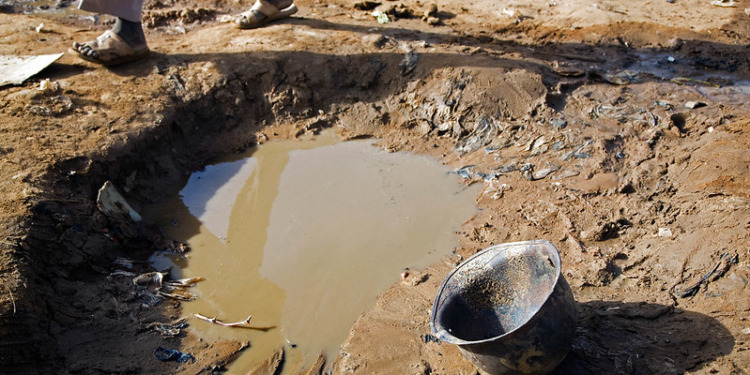In a Joint Communication adopted on June 28 by the European Commission and the High Representative, the European Union (EU) has proposed a new framework for addressing the “growing impact of climate change and environmental degradation in the fields of peace, security, and defence.”
At the same time, the EU warns of the urgent need to assess the new risks of using large-scale, climate-altering technologicy as a way to tackle global warming.
The Communication emphasizes the need for joint action between national governments and Brussels to prepare for and tackle the “cascading” effects of growing climate change-related threats.
Our peace and security depend on robust climate and environmental policies.
Today, the EU proposes a new outlook on the nexus between climate and security to better integrate it into our external policies through a set of concrete actions. ↓https://t.co/Wi4jAXpiqu pic.twitter.com/VavL06F9wJ
— European Commission (@EU_Commission) June 28, 2023
To ensure a comprehensive and proactive response, the EU will focus on four priorities:
- enhancing evidence-based analysis and foresight for better planning and decision-making;
- integrating climate and security concerns into external actions;
- strengthening climate adaptation and mitigation measures for civilian and military capabilities;
- reinforcing international partnerships within multilateral frameworks.
To achieve these, the EU proposes undertaking approximately 30 actions. These include establishing a data and analysis hub on climate and environmental security, deploying environmental advisors in EU missions and operations, and conducting in-depth analyses and studies in vulnerable regions like the Sahel and the Arctic, among other measures.
Overall, the aim is “to better integrate the climate, peace and security nexus in the EU’s external policies, with a set of concrete actions.”
Particular attention is posed to threats such as climate-driven conflicts and risks posed by geoengineering.
Climate-induced conflicts
As the EU explains, climate change acts as a threat multiplier, amplifying existing tensions and contributing to the outbreak of conflicts.
Rising temperatures, water scarcity, and extreme weather events can destabilize regions and exacerbate resource-based conflicts, such as those related to land, water, and food.
The link between climate change and conflict is increasingly evident in least developed countries and, as the ICRC states, “people enduring conflict are not only among the most vulnerable to the climate and environmental crises, they are also among those most neglected by climate action.”.
In sub-Saharan Africa, the impacts of climate change have contributed to resource scarcity, displacement, and competition for limited resources. This has resulted in conflicts over access to water and land, as well as increased tensions among communities.
The Sahel region in particular, characterized by its vulnerability to climate change with temperatures rising faster than average global temperatures, is witnessing increased violence and displacement due to prolonged droughts and changing rainfall patterns.
The Middle East is another region significantly affected by climate-driven conflicts.
The Syrian civil war, for example, was influenced by a combination of factors, including an extended drought that led to agricultural failure, displacement, and heightened social unrest. The resulting humanitarian crisis had ripple effects on neighboring countries, exacerbating regional instability.
Severe droughts or flash floods

The Khabur River in #Syria has turned into this
because of climate change. pic.twitter.com/WziaW5lNTP
— ICRC (@ICRC) June 24, 2023
Although climate-driven conflicts are common in more economically and politically fragile areas and countries, their spillover effects have implications for the wealthier parts of the world, including the EU.
As stated in the Communication: “These can arise through increased demand for aid, the disruption of supply chains or with people fleeing from uninhabitable areas or severe adverse conditions at home, with the potential of internal displacement and increased irregular migration but also through organised crime, terrorist organisations and the proliferation of weapons.”
Furthermore, the EU is not immune to the economic consequences of climate change. Disruptions in global supply chains, trade, and the availability of key resources, such as energy and food, can have far-reaching impacts on stability and prosperity.
The Risks of Geoengineering
In the new framework, the European Commission is also considering the risks associated with climate geoengineering.
Geoengineering is described as a “set of emerging technologies that could manipulate the environment and partially offset some of the impacts of climate change.”
Solar geoengineering, which involves reflecting sunlight back into space to reduce the Earth’s temperature, would be one example. This could be achieved by using sea salt to stimulate cloud formation over the ocean.
Another technique would be stratospheric aerosol injection. By injecting reflective aerosols into the stratosphere to create a cooling effect, these aerosols would reflect a portion of the incoming sunlight, thus reducing the warming of the planet.
However, scientists have raised several concerns regarding the implementation of geoengineering techniques, pointing to uncertainties surrounding the effectiveness, unintended consequences, and ethical implications of geoengineering.
The potential risks include interference with weather patterns, regional imbalances, and ecological disruption.
“The risks, impacts and unintended consequences that these technologies pose are poorly understood, and necessary rules, procedures and institutions have not been developed, ” the EU communication explains.
The very idea of manipulating the Earth’s systems on such a large scale calls for robust research, stringent governance frameworks, and international collaboration to ensure responsible and informed decision-making.
By acknowledging the risks and complexities associated with the impacts of climate change on peace and security, the EU is taking important steps in charting a more sustainable and secure path toward a resilient future for all.
Editor’s Note: The opinions expressed here by the authors are their own, not those of Impakter.com — In the Featured Photo: European Parliament building, Brussels, Belgium. Featured Photo Credit: Guillaume Meurice.









